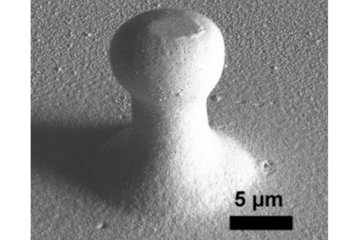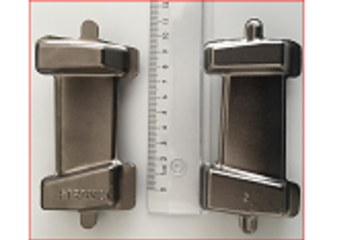All genres
1581.
Talk
Shark teeth as high-performance tissue: Relating hierarchical structure and excellent mechanical properties for bio-inspiration. MRS Fall Meeting 2012, Boston, MA, USA (2012)
1582.
Talk
The Multiscale Modeling of Biomaterials as a Tool for Understanding the Design Principles in Nature. IVth National Crystallographic Symposium, Sofia, Bulgaria (2012)
1583.
Talk
Combining ab initio calculations and high resolution experiments to improve the understanding of advanced Mg-Y and Mg-RE alloys. 7th Annual Conference of the ARC Centre of Excellence for Design in Light Metals, Melbourne, VIC, Australia (2012)
1584.
Talk
Advanced analysis of 3D EBSD data obtained by FIB tomography. NVvM 2012 Materials Science Meeting, Eindhoven, The Netherlands (2012)
1585.
Talk
Spatially Correlated TEM, EBSD and APT Analysis. SFB 761 Klausurtagung, Bad Neuenahr, Germany (2012)
1586.
Talk
Characterization of microstructural deformation mechanisms at high strain rates. 12th Materials Science & Technology (MS&T) Conference, Pittsburgh, PA, USA (2012)
1587.
Talk
Exploring the internal interfaces at the atomic-scale in Cu(In,Ga)Se2 thin-films solar cells. 1st EU APT Workshop, CEA/MINATEC, Grenoble, France (2012)
1588.
Talk
Primary creep of Ni base supealloys used in hot gas turbine blades. Alstom Company, Baden, Switzerland (2012)
1589.
Talk
Discrete Dislocation Dynamics Simulation of High Temperature Creep in Nickel-based Single Crystal Superalloys. MMM2012, 6th International Conference on Multiscale Materials Modeling, Singapore City, Singapore (2012)
1590.
Talk
Multi-scale characterization of the giant fault mechanism in Ti–Nb based gum cast alloys. 12th Materials Science & Technology (MS&T) Conference, Pittsburgh, PA, USA (2012)
1591.
Talk
Combined Experimental and Theoretical Study on the Ductilizing Effect of Rare Earth Elements in Magnesium Alloys. MMM2012, 6th International Conference on Multiscale Materials Modeling, Singapore City, Singapore (2012)
1592.
Talk
Characterization of microstructural plasticity mechanisms in TNTZ-O alloys. Materials Science Engineering (MSE), Dramstadt, Germany (2012)
1593.
Talk
Study on internal interfaces in CIGS thin-films solar cells using atom probe tomography. 27th EU PVSEC, Frankfurt, Germany (2012)
1594.
Talk
Shark teeth: Relating hierarchical structure, composition, and the resulting mechanical properties for bio-inspiration. Workshop: Biocompatible Coatings and their applications, University Duisburg-Essen and Evonik, Essen, Germany (2012)
1595.
Talk
Atom probe tomography for nanoscale analysis of nitride thin films. 7th International Conference on Surfaces, Coatings and Nanostructured Materials NANOSMAT-2012, Prague, Chech Republic (2012)
1596.
Talk
Microstructural analysis of strain rate sensitivity of dual-phase steel. Materials Science Engineering (MSE) 2012, Darmstadt, Germany (2012)
1597.
Talk
In-situ investigations of small strain plasticity in dual-phase steel. 23rd International Congress of Theoretical and Applied Mechanics (ICTAM), Beijing, China (2012)
1598.
Talk
Dislocation dynamics modeling of the glide-climb mobility of a ½ a0<110>{111} dislocation in interaction with γ’ precipitate in Ni-based superalloy. 4th International Conference on Dislocations, Budapest, Hungary (2012)
1599.
Talk
Influence of low angle grain boundary on free dislocation multiplication and dislocation structure evolution. 4th International Conference on Fundamental Properties of Dislocations, Budapest, Hungary (2012)
1600.
Talk
Multi-scale investigation of strain-hardening mechanisms in high-Mn steels from the mesoscale to the atomic scale. Lecture at Materials Department, Oxford University, Oxford, UK (2012)











